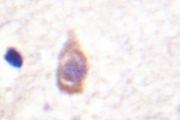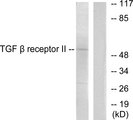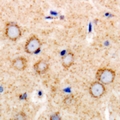Login
Registration enables users to use special features of this website, such as past
order histories, retained contact details for faster checkout, review submissions, and special promotions.
order histories, retained contact details for faster checkout, review submissions, and special promotions.
Forgot password?
Registration enables users to use special features of this website, such as past
order histories, retained contact details for faster checkout, review submissions, and special promotions.
order histories, retained contact details for faster checkout, review submissions, and special promotions.
Quick Order
Products
Antibodies
ELISA and Assay Kits
Research Areas
Infectious Disease
Resources
Purchasing
Reference Material
Contact Us
Location
Corporate Headquarters
Vector Laboratories, Inc.
6737 Mowry Ave
Newark, CA 94560
United States
Telephone Numbers
Customer Service: (800) 227-6666 / (650) 697-3600
Contact Us
Additional Contact Details
Login
Registration enables users to use special features of this website, such as past
order histories, retained contact details for faster checkout, review submissions, and special promotions.
order histories, retained contact details for faster checkout, review submissions, and special promotions.
Forgot password?
Registration enables users to use special features of this website, such as past
order histories, retained contact details for faster checkout, review submissions, and special promotions.
order histories, retained contact details for faster checkout, review submissions, and special promotions.
Quick Order
| Catalog Number | Size | Price |
|---|---|---|
| LS-C499931-50 | 50 µg | $294 |
| LS-C499931-100 | 100 µg | $360 |
Polyclonal Rabbit anti‑Human TGFBR2 Antibody (Biotin) LS‑C499931
Polyclonal Rabbit anti‑Human TGFBR2 Antibody (Biotin) LS‑C499931
Antibody:
TGFBR2 Rabbit anti-Human Polyclonal (Biotin) Antibody
Application:
ELISA
Reactivity:
Human
Format:
Biotin, Unmodified
Other formats:
Toll Free North America
 (800) 227-6666
(800) 227-6666
For Research Use Only
Overview
Antibody:
TGFBR2 Rabbit anti-Human Polyclonal (Biotin) Antibody
Application:
ELISA
Reactivity:
Human
Format:
Biotin, Unmodified
Other formats:
Specifications
Description
TGFBR2 antibody LS-C499931 is a biotin-conjugated rabbit polyclonal antibody to human TGFBR2. Validated for ELISA.
Target
Human TGFBR2
Synonyms
TGFBR2 | AAT3 | FAA3 | HNPCC6 | LDS2B | MFS2 | TGF-beta receptor type-2 | TGF-beta RII | TGFBRII | TGF-beta type II receptor | TGFbeta-RII | TbetaR-II | TGF beta Receptor II | TGF-beta receptor type II | TGF-beta receptor type IIB | TGFR-2 | LDS1B | RIIC | TAAD2
Host
Rabbit
Reactivity
Human
(tested or 100% immunogen sequence identity)
Clonality
IgG
Polyclonal
Conjugations
Purification
Protein G purified
Modifications
Unmodified
Immunogen
Recombinant human TGF-beta receptor type-2 protein (195-334AA)
Specificity
Transmembrane serine/threonine kinase forming with the TGF-beta type I serine/threonine kinase receptor, TGFBR1, the non-promiscuous receptor for the TGF-beta cytokines TGFB1, TGFB2 and TGFB3. Transduces the TGFB1, TGFB2 and TGFB3 signal from the cell surface to the cytoplasm and is thus regulating a plethora of physiological and pathological processes including cell cycle arrest in epithelial and hematopoietic cells, control of mesenchymal cell proliferation and differentiation, wound healing, extracellular matrix production, immunosuppression and carcinogenesis. The formation of the receptor complex composed of 2 TGFBR1 and 2 TGFBR2 molecules symmetrically bound to the cytokine dimer results in the phosphorylation and the activation of TGFRB1 by the constitutively active TGFBR2. Activated TGFBR1 phosphorylates SMAD2 which dissociates from the receptor and interacts with SMAD4. The SMAD2-SMAD4 complex is subsequently translocated to the nucleus where it modulates the transcription of the TGF-beta-regulated genes. This constitutes the canonical SMAD-dependent TGF-beta signaling cascade. Also involved in non-canonical, SMAD-independent TGF-beta signaling pathways.
Applications
- ELISA
- Applications tested for the base form of this product only
Presentation
PBS, pH 7.4, 0.03% Proclin 300, 50% glycerol.
Storage
Short term: -20°C; Long term: -80°C; Avoid freeze-thaw cycles.
Restrictions
For research use only. Intended for use by laboratory professionals.
About TGFBR2
Publications (0)
Customer Reviews (0)
Featured Products
Species:
Human, Mouse
Applications:
IHC - Paraffin, Immunofluorescence, Western blot
Species:
Human, Mouse
Applications:
IHC, IHC - Paraffin, Western blot
Species:
Human, Mouse, Rat
Applications:
Western blot, Peptide Enzyme-Linked Immunosorbent Assay
Species:
Human, Mouse, Rat, Pig, Rabbit
Applications:
IHC, IHC - Paraffin, Western blot
Request SDS/MSDS
To request an SDS/MSDS form for this product, please contact our Technical Support department at:
Technical.Support@LSBio.com
Requested From: United States
Date Requested: 4/18/2025
Date Requested: 4/18/2025














